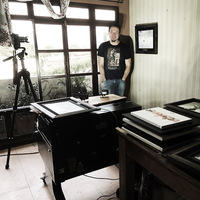In many countries around the world, archaeological resources are seen as an opportunity for social, cultural and economic development. El Salvador is a step behind in taking advantage of their rich archaeological heritage as a means of... more
In many countries around the world, archaeological resources are seen as an opportunity for social, cultural and economic development. El Salvador is a step behind in taking advantage of their rich archaeological heritage as a means of development. In El Salvador, a weak relationship between government and academia regarding rural communities living near archaeological sites hinders the implementation of strategies that could lead to the management and use of archaeological resources for the benefit of those communities. This triadic relationship is referred to as the "Triangle of Inclusion and Cooperation" (TIC). The objective of this work is to strengthen alliances/partnerships between the three entities included in the TIC, to provide a framework for addressing the uses of local resources, including other alternatives of development according local concerns and needs. The TIC required a thorough exploration and review of published and unpublished studies, government and academic files, interviews with Salvadorian cultural experts, and by personal observations in the field. This study is the first English subject thesis to provide a comprehensive history of the institutionalization of archaeology in El Salvador and to identify factors that shaped the current management of archaeological resources. Its historical process is framed in a socio-political context which is also analyzed in order to understand the level of inclusion of rural communities in academic and government issues. Students, scholars, government officials, and general society will find in this document a broad examination of the management and development of archaeology and its potential in this Central American country. The study represents an important improvement in interdisciplinary studies as it advances the understanding of archaeological management and its implications. It also contributes to the debate concerning the ultimate use and purpose of archaeological studies and policy adopted to protect and develop cultural resources in any co [...]
Research Interests:
A consecuencia de los danos ocasionados por los terremotos del 2001 a diversos inmuebles en el area central de Santa Tecla, se realizaron una serie de trabajos que dieron como resultado importantes hallazgos en la Iglesia Inmaculada... more
A consecuencia de los danos ocasionados por los terremotos del 2001 a diversos inmuebles en el area central de Santa Tecla, se realizaron una serie de trabajos que dieron como resultado importantes hallazgos en la Iglesia Inmaculada Concepcion, en el Colegio parroquial homonimo y en residencias en el Centro Historico de Santa Tecla. Tambien se presentan los hallazgos encontrados en la Iglesia El Rosario, del centro de San Salvador y en un sitio arqueologico prehispanico: Tazumal. Todos estos hallazgos responden a la epoca republicana de El Salvador y refieren importante informacion sobre el comercio y la industria de aquella epoca, y en el caso de las iglesias, acerca del patron funerario de los primeros anos de la republica, entre otros.
Research Interests:
Supe de un caso, como muchos han de haber, de un empleado que había dedicado treinta y cinco años de trabajo a su institución. En el camino había dejado muchos recuerdos y amigos, quienes en su mayoría hace algún tiempo abandonaron la... more
Supe de un caso, como muchos han de haber, de un empleado que había dedicado treinta y cinco años de trabajo a su institución. En el camino había dejado muchos recuerdos y amigos, quienes en su mayoría hace algún tiempo abandonaron la entidad. Se aproximaba la hora de su retiro. Entre sus compañeros de trabajo, de una generación mucho más joven, aquello no fue más que un sencillo y ligero adiós… DOI: http://dx.doi.org/10.5377/koot.v0i2.1154 Revista de Museología "Kóot" No.2 2010: 77-100
